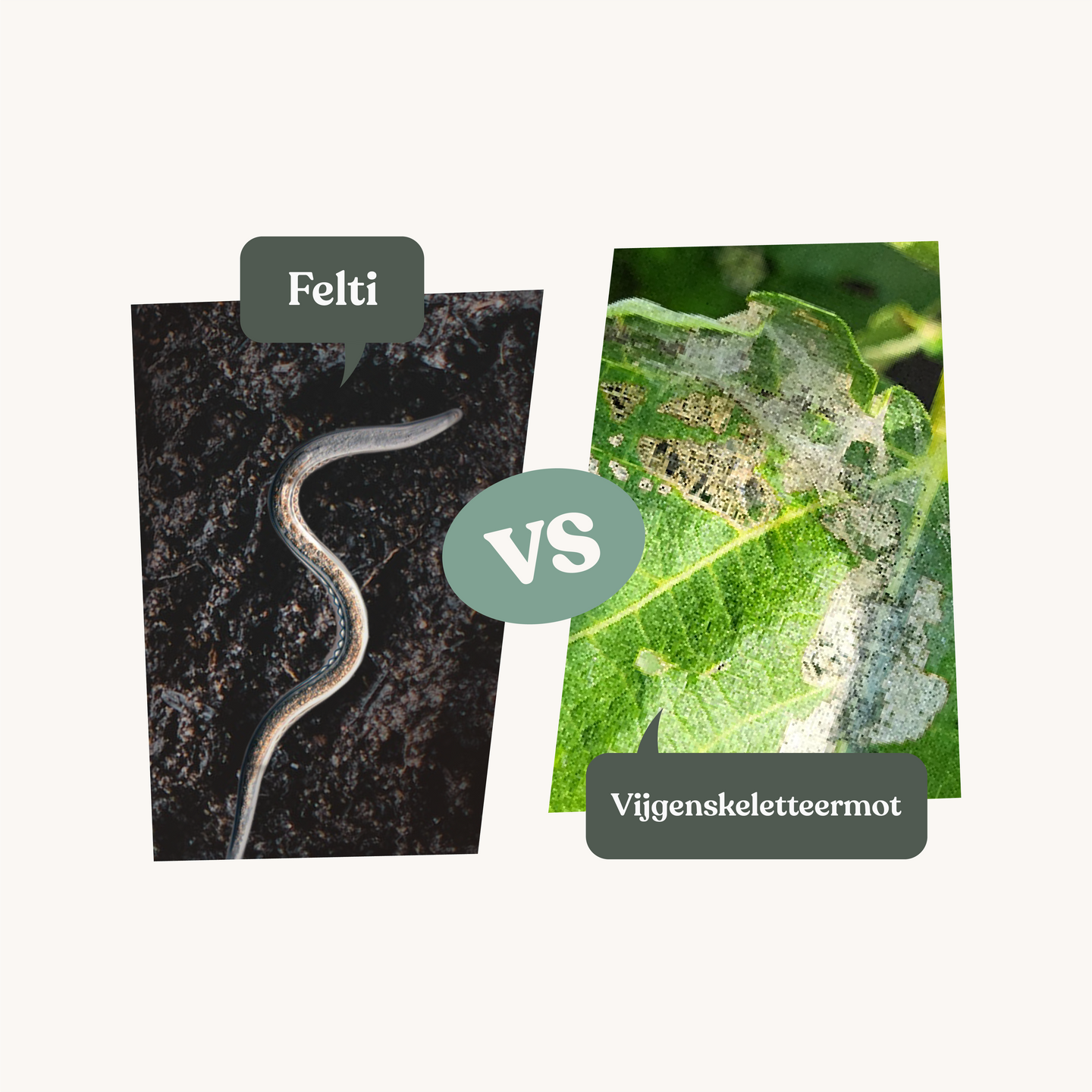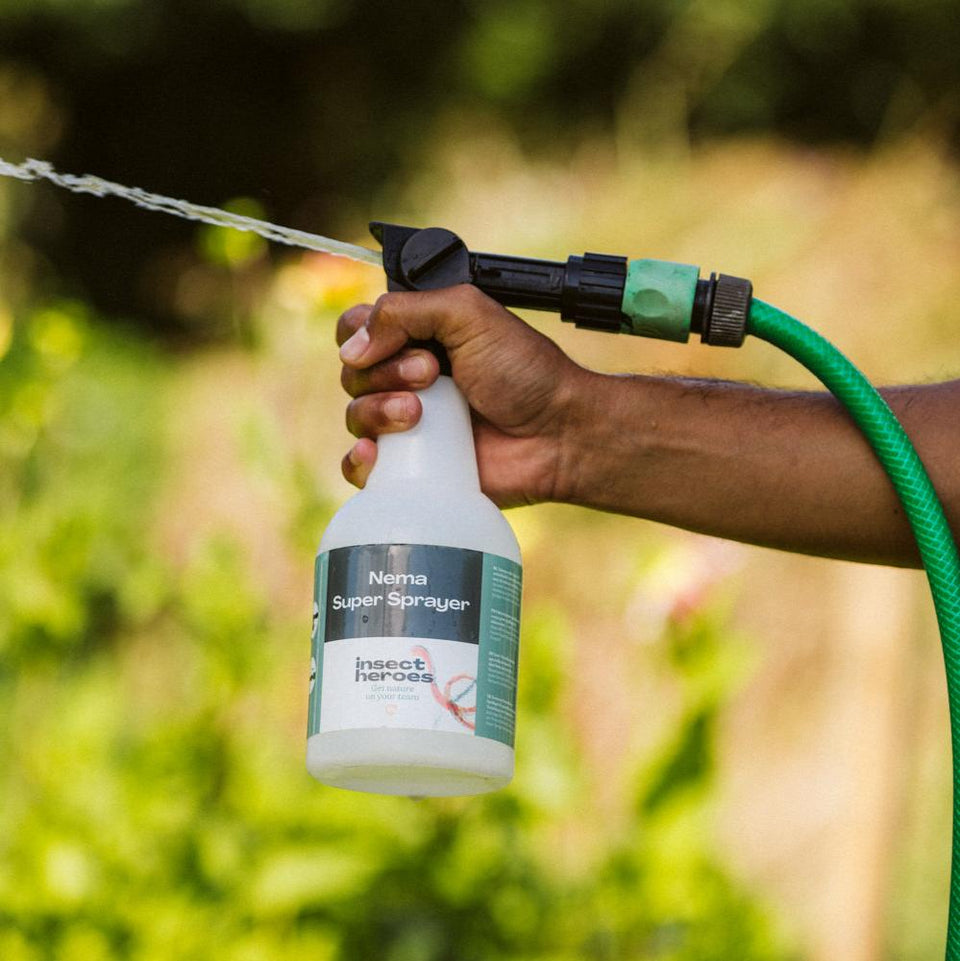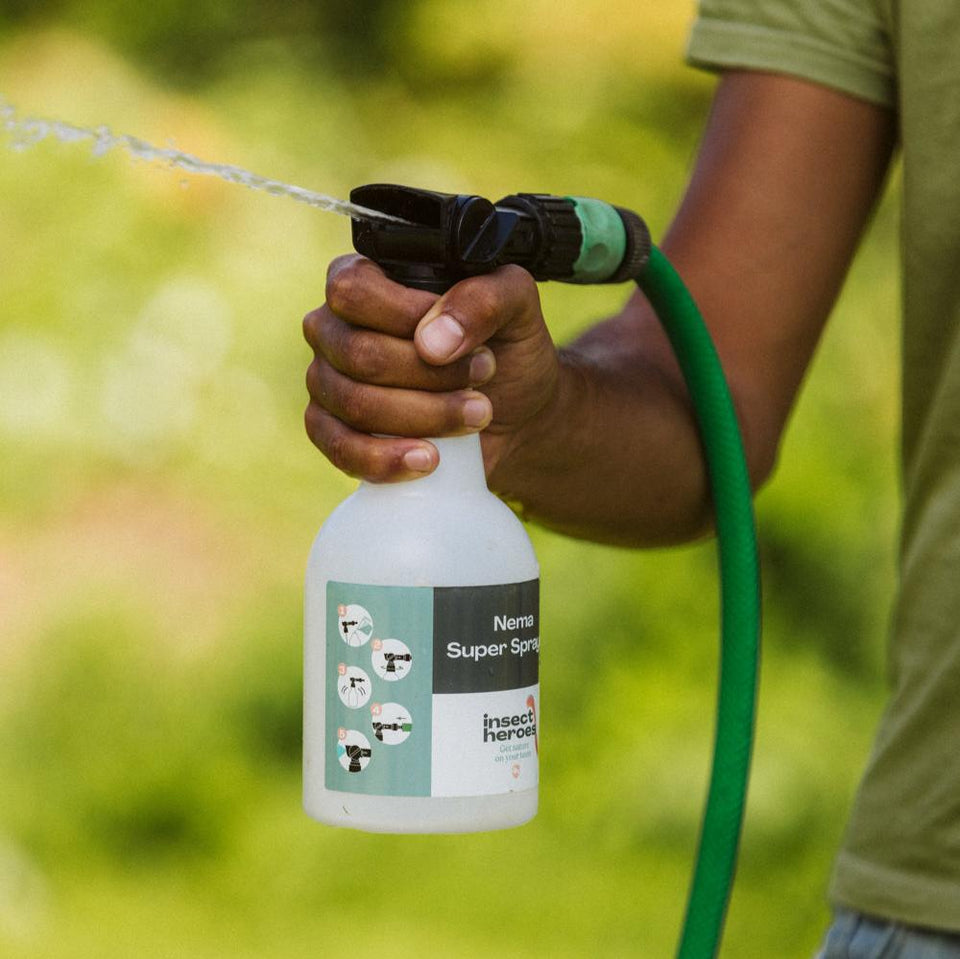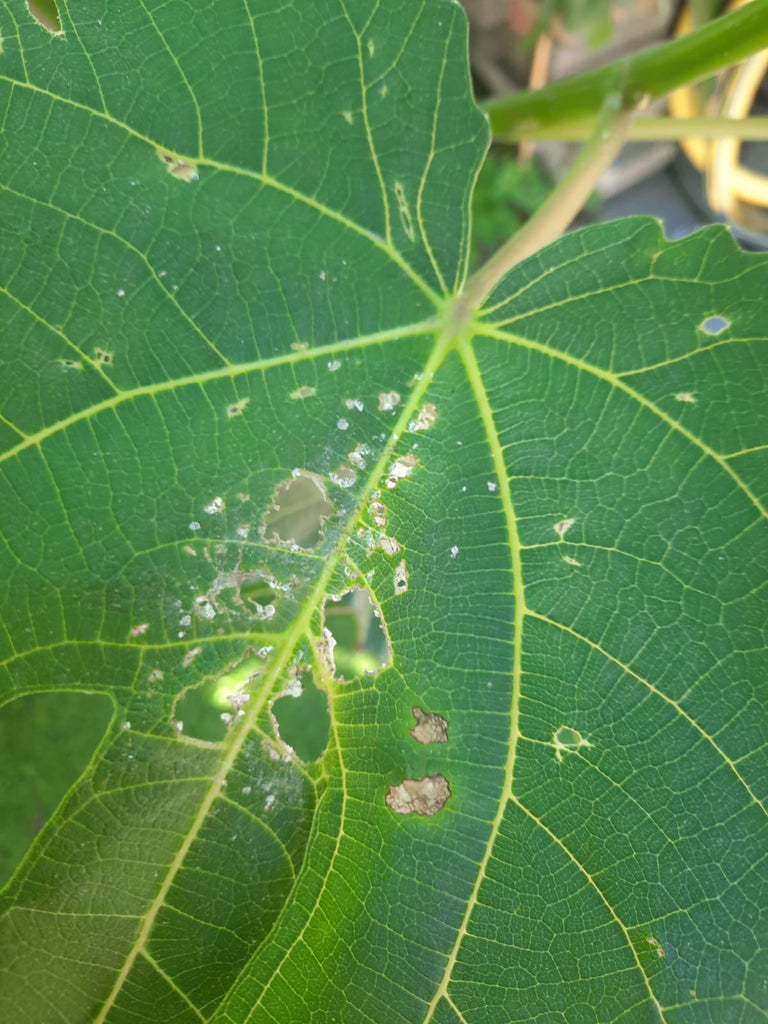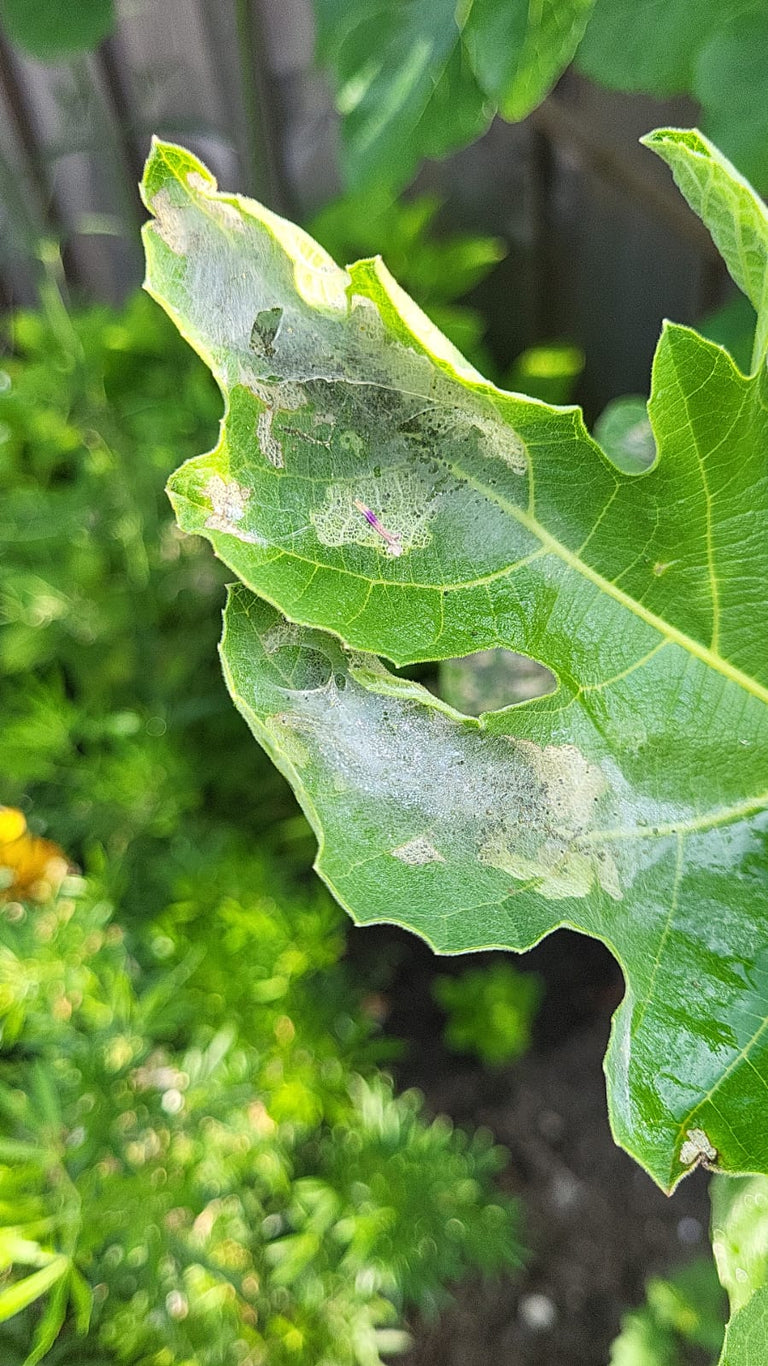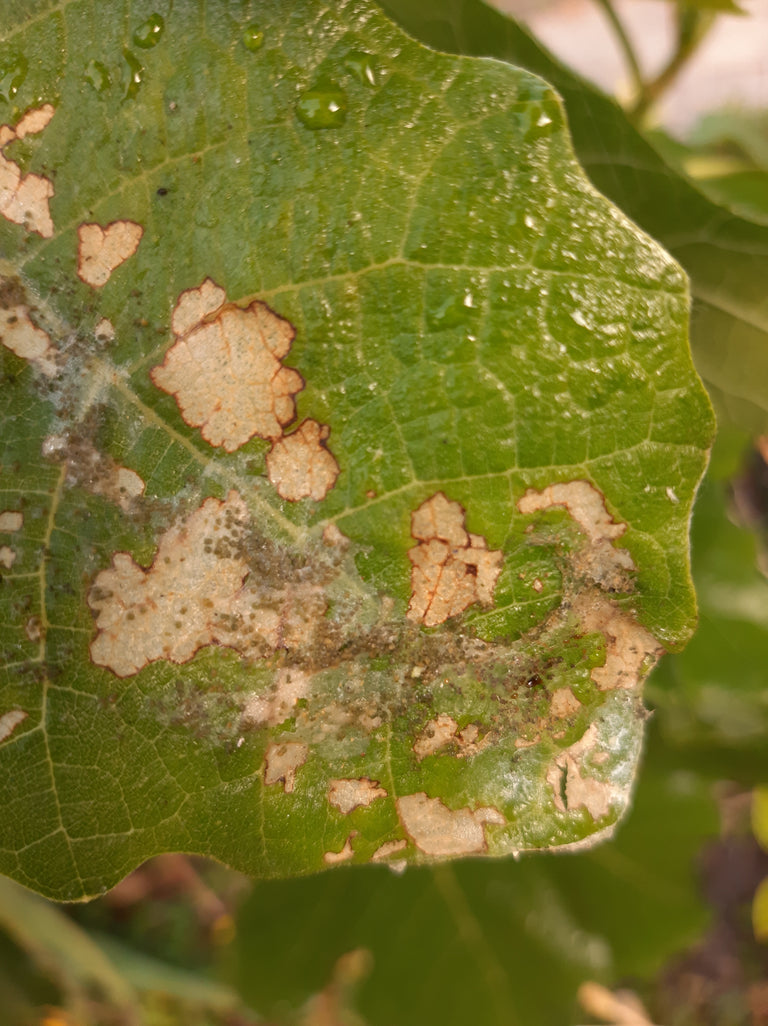How to control, recognize and prevent fig skeleton moth
How to recognize the fig skeleton moth
The fig skeleton moth ( Choreutis nemorana ) is a small moth that can be recognized by a few striking features. The moth has a wingspan of about 10 to 15 millimeters and its forewings are brown with a striking pattern of white and dark brown stripes and spots. The hindwings are usually lighter in color and less striking.
The caterpillar of the fig skeletonizer moth, which is harmful to fig trees, is green with yellow stripes and small black dots along its body. This caterpillar often spins leaves together with silky threads, which can help identify the presence of the moth.
Fig skeleton moth damage
The caterpillars of the fig skeleton moth scrape the upper side of the leaves. This creates a transparent 'skeleton' of the leaves: the veins of the leaf. The figs themselves are fortunately not affected.
The caterpillars hide under webs. The black dots in the webs are eggs, from which caterpillars crawl. Advice is to remove the web as much as possible, before the caterpillars hatch.
Combating Fig Skeleton Moth
The caterpillars of the fig skeleton moth can be environmentally controlled with Felti or Carpo nematodes . Microscopic nematodes are sprayed over the tree with a garden sprayer. If a nematode comes into contact with the caterpillar, the nematode crawls into the caterpillar and kills the pest.
Why are there more and more fig skeleton moths?
Since the species has established itself in the Netherlands, you have seen more and more moths and caterpillars appearing. This is because the fig skeleton moth does not have many natural enemies. In addition, more and more winter-hardy fig trees are being planted, allowing the species to expand well.
Vijgenskeletteermot voorkomen
De vijgenskeletteermot kan aanzienlijke schade aanrichten aan vijgenbomen, maar met de juiste preventieve maatregelen kun je een infestatie voorkomen. Hier zijn 4 effectieve tips om je vijgenboom te beschermen tegen deze plaag.
Onderhoud gezonde vijgenbomen
Gezonde bomen zijn minder vatbaar voor plagen. Zorg ervoor dat je vijgenboom voldoende water en voedingsstoffen krijgt. Regelmatig snoeien verbetert de luchtcirculatie, wat plagen kan ontmoedigen.
Gebruik insectengaas
Insectengaas kan een fysieke barrière vormen die voorkomt dat volwassen vijgenskeletteermotten hun eieren op de bladeren van de vijgenboom leggen. Dit is vooral effectief in het vroege voorjaar wanneer de motten actief worden.
Verwijder aangetaste bladeren
Controleer je vijgenboom regelmatig en verwijder aangetaste bladeren die tekenen van de rupsen laten zien. Dit kan de verspreiding van de vijgenskeletteermot naar andere delen van de boom voorkomen.
Trek natuurlijke vijanden aan
Het stimuleren van natuurlijke vijanden zoals vogels in je tuin kan helpen de vijgenskeletteermot op natuurlijke wijze te bestrijden. Plaats vogelhuisjes en zorg voor een insectvriendelijke omgeving om deze nuttige dieren aan te trekken.
Andere manieren om de vijgenskeletteermot te bestrijden
Vijgenskeletteermot bestrijden met azijn
Hoewel azijn op het eerste gezicht een natuurlijke en goedkope optie lijkt om de vijgenskeletteermot te bestrijden, brengt het risico’s met zich mee voor je planten. Azijn is namelijk een zuur dat niet alleen de rupsen, maar ook de vijgenboom zelf kan beschadigen. De hoge zuurgraad kan de bladeren van de vijgenboom doen verbranden, waardoor de plant verzwakt en vatbaarder wordt voor andere plagen en ziektes. Daarnaast is azijn niet krachtig genoeg om grote plagen effectief te bestrijden, en het doodt de motten of rupsen niet onmiddellijk. Biologische bestrijdingsmiddelen of het inzetten van natuurlijke vijanden zijn daarom vaak effectievere en veiligere alternatieven voor het gebruik van azijn.
Vijgenskeletteermot bestrijden met chemische middelen
Chemische insecticiden kunnen snel resultaat bieden bij het bestrijden van vijgenskeletteermotten, maar ze brengen aanzienlijke nadelen met zich mee. Chemische bestrijdingsmiddelen kunnen schadelijk zijn voor het milieu en nuttige insecten zoals bijen doden. Daarnaast kunnen ze residuen achterlaten die de plant en de bodem vervuilen. In tegenstelling tot duurzamere methoden, zoals het gebruik van aaltjes tegen rupsen, hebben chemische middelen vaak een negatieve impact op de biodiversiteit. Controleer daarom altijd de samenstelling van het product op giftige stoffen zoals pyrethrinen, deltamethrin of acetamiprid, en vermijd deze waar mogelijk.
View our overview page with all pests.









































